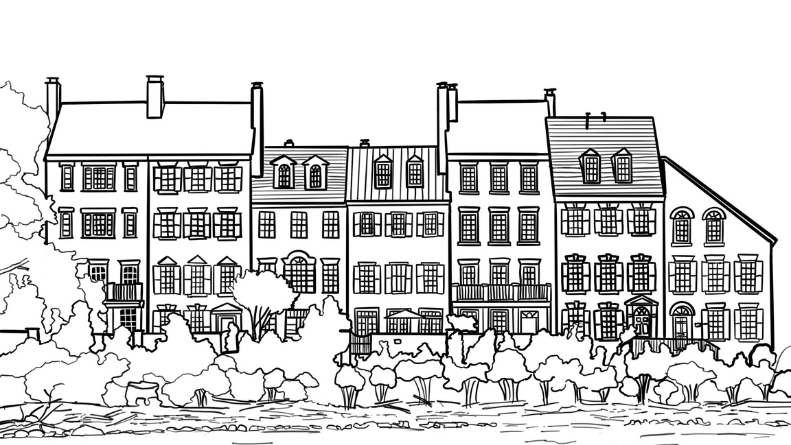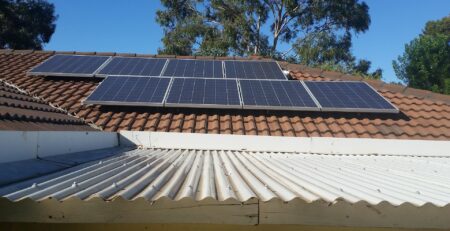Designing Homes for Health and Happiness
In the hustle and bustle of modern life, our homes have become our sanctuaries, places where we seek solace and rejuvenation. But what if your home could do more than just provide shelter? What if it could actively enhance your mental and physical health? This is the premise behind the concept of healthy home design, which emphasises the importance of natural light, eco-friendly practices, and the integration of nature within our living spaces.
In recent years, there has been a growing awareness of how our environments influence our well-being. With people spending more time indoors, the design of our homes has never been more critical. From improved sleep quality to reduced stress levels, the benefits of a healthy home are profound and wide-ranging. This article will delve into the various elements that constitute a healthy home and how they can transform your living space into a haven of well-being.
Natural Light: The Key to Wellness
Natural light is a fundamental component of healthy home design. Its benefits extend far beyond mere aesthetics; it plays a crucial role in our overall well-being. Exposure to natural light has been linked to improved mood, better sleep, and enhanced productivity.
Benefits of Natural Light
One of the primary advantages of natural light is its impact on our circadian rhythms. These internal clocks regulate our sleep-wake cycles, and natural light helps to synchronise them. Adequate exposure to daylight during the day can lead to better sleep quality at night, as our bodies are better prepared to wind down when the sun sets.
Moreover, natural light is known to boost mood and reduce symptoms of depression. This is particularly important during the winter months when reduced daylight can lead to seasonal affective disorder (SAD). By maximising natural light in our homes, we can create spaces that promote mental well-being year-round.
In addition to these psychological benefits, natural light also has physiological advantages. It helps in the production of Vitamin D, which is essential for bone health and immune function. Furthermore, studies have shown that environments rich in natural light can enhance cognitive performance, making it easier to concentrate and be productive.
Design Strategies for Maximising Natural Light
To harness the benefits of natural light, it’s essential to consider the design of your home. Here are a few strategies to maximise natural light:
- Large Windows and Skylights: Installing large windows and skylights can significantly increase the amount of natural light entering your home. Positioning them strategically can ensure that light reaches the most frequently used areas.
- Open Floor Plans: An open floor plan allows light to travel more freely throughout the space. Removing unnecessary walls and partitions can create a brighter and more inviting environment.
- Light-Coloured Interiors: Using light-coloured paints and finishes can help reflect natural light, making the space feel brighter and more spacious.
- Mirrors and Reflective Surfaces: Placing mirrors opposite windows can amplify natural light by reflecting it into darker areas of the room.
- Minimalist Window Treatments: Opt for sheer curtains or blinds that allow light to filter through while still providing privacy.
Embracing Nature Indoors
Bringing elements of nature indoors is another cornerstone of healthy home design. Known as biophilic design, this approach seeks to connect people with nature to improve well-being, creativity, and productivity.
The Science Behind Biophilic Design
Biophilic design is rooted in the idea that humans have an inherent connection to nature, a concept known as biophilia. This connection can have significant positive effects on our health and well-being. Studies have shown that incorporating natural elements into indoor environments can reduce stress, lower blood pressure, and improve mood.

Incorporating Natural Elements
There are various ways to incorporate nature into your home design:
- Indoor Plants: Houseplants are a simple and effective way to bring nature indoors. They not only enhance the aesthetics of a space but also improve air quality by filtering pollutants and releasing oxygen.
- Natural Materials: Using natural materials like wood, stone, and bamboo can create a warm and inviting atmosphere. These materials also have tactile qualities that synthetic materials often lack, contributing to a more soothing environment.
- Water Features: Adding a small water feature, such as a fountain or aquarium, can introduce the calming sounds of nature into your home.
- Nature-Inspired Artwork: Incorporating artwork that depicts natural scenes or elements can evoke the feeling of being outdoors.
- Views of Nature: If possible, design your home to maximise views of the outdoors. Placing windows to frame scenic views can create a strong connection to the natural world.
Eco-Friendly Practices for Healthier Homes
Eco-friendly practices are integral to creating a healthy home. Sustainable design not only benefits the environment but also enhances the quality of life for occupants. By reducing exposure to harmful chemicals and improving air quality, eco-friendly homes contribute to better health outcomes.
Sustainable Building Materials
Choosing sustainable building materials is a crucial step in creating an eco-friendly home. Materials like reclaimed wood, bamboo, and recycled metal have a lower environmental impact compared to conventional options. Additionally, they often have fewer harmful chemicals, which can improve indoor air quality.

Energy Efficiency
Energy-efficient homes are not only better for the environment but also for your wallet. By reducing energy consumption, you can lower your utility bills and decrease your carbon footprint. Key strategies for improving energy efficiency include:
- Insulation: Proper insulation helps maintain a comfortable indoor temperature, reducing the need for heating and cooling.
- Energy-Efficient Windows: Installing double-glazed or triple-glazed windows can prevent heat loss and improve energy efficiency.
- LED Lighting: LED bulbs use significantly less energy than traditional incandescent bulbs and have a longer lifespan.
- Renewable Energy: Incorporating renewable energy sources, such as solar panels, can further reduce your reliance on non-renewable energy.
Non-Toxic Materials and Finishes
Many conventional building materials and finishes contain volatile organic compounds (VOCs) that can off-gas harmful chemicals into the air. Choosing non-toxic materials and finishes, such as low-VOC paints and adhesives, can significantly improve indoor air quality and reduce the risk of health issues.
Water Conservation
Water conservation is another critical aspect of sustainable home design. Installing water-saving fixtures, such as low-flow toilets and faucets, can reduce water usage without sacrificing performance. Additionally, collecting rainwater for irrigation and using drought-resistant plants in landscaping can further conserve water resources.
Design Strategies for Enhanced Well-Being
Designing a home that promotes well-being involves considering various elements, from layout and materials to lighting and decor. Here are some key strategies to create a healthier living environment:
Creating Functional Spaces
A well-designed home should have functional spaces that cater to the needs of its occupants. This includes creating areas for relaxation, work, and socialisation. By thoughtfully arranging furniture and decor, you can create a harmonious flow that enhances comfort and convenience.
Prioritising Air Quality
Indoor air quality has a significant impact on health. Poor air quality can lead to respiratory issues, allergies, and other health problems. To improve air quality, consider the following:
- Ventilation: Ensure your home has adequate ventilation to allow fresh air to circulate and reduce the buildup of indoor pollutants.
- Air Purifiers: Using air purifiers with HEPA filters can help remove airborne particles and allergens.
- Houseplants: As mentioned earlier, houseplants can improve air quality by filtering pollutants.
Ergonomic Design
Ergonomic design is essential for creating a comfortable and healthy living environment. This involves designing spaces and selecting furniture that supports proper posture and reduces strain on the body. Key considerations include:
- Workstations: For those who work from home, having an ergonomic workstation is crucial. This includes an adjustable chair, a desk at the proper height, and a monitor positioned at eye level.
- Seating: Comfortable and supportive seating is essential for relaxation and socialisation areas. Choose chairs and sofas with good lumbar support.
- Sleep Environment: A comfortable and supportive mattress, along with blackout curtains and a quiet environment, can significantly improve sleep quality.
Aesthetic and Emotional Well-Being
The aesthetics of a home can have a profound impact on emotional well-being. Creating a visually pleasing environment can reduce stress and promote relaxation. Key strategies include:
- Personalised Decor: Incorporate personal touches, such as family photos, artwork, and souvenirs, to create a space that feels uniquely yours.
- Colour Psychology: Use colour psychology to create different moods in different areas of your home. For example, soft blues and greens can create a calming atmosphere, while vibrant yellows and oranges can energise a space.
- Decluttering: A clutter-free environment can reduce stress and improve mental clarity. Implementing storage solutions and organising belongings can help maintain a tidy home.
Conclusion
Creating a healthy home is about more than just aesthetics; it’s about designing a space that promotes overall well-being. By incorporating natural light, embracing nature indoors, adopting eco-friendly practices, and considering the physical and emotional needs of occupants, you can transform your home into a sanctuary of health and happiness.
As Jamie Johnson, CEO of FJP Investment, aptly puts it, “Our homes are extensions of ourselves. When we design them with well-being in mind, we not only improve our own lives but also contribute to a healthier planet.”
Investing in a healthy home is an investment in your future. It’s a commitment to living a life of balance, harmony, and well-being. So why not start today? Transform your living space into a haven that nurtures your mind, body, and soul. After all, a healthy home is the foundation of a healthy life.
ARE YOU READY TO START INVESTING?
Subscribe to our mailing list now for exclusive deals, investment guides and the latest information from the property market.







